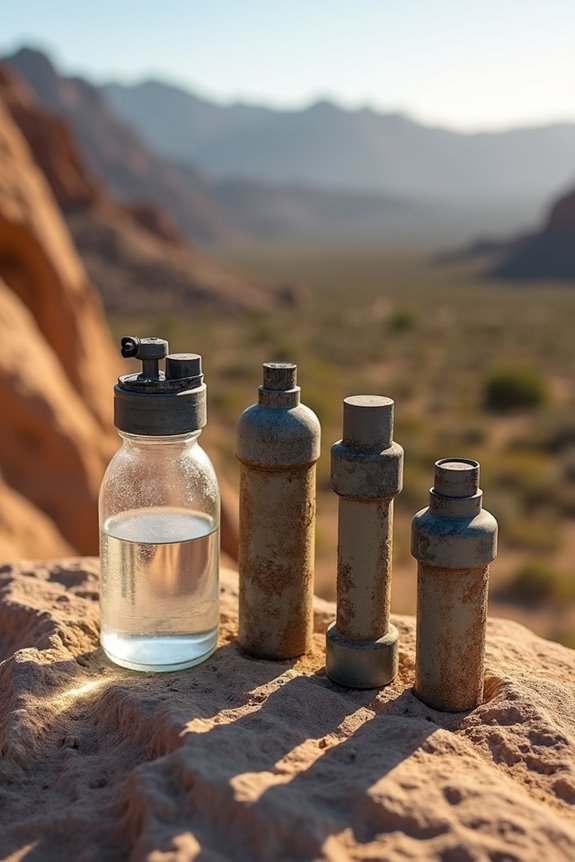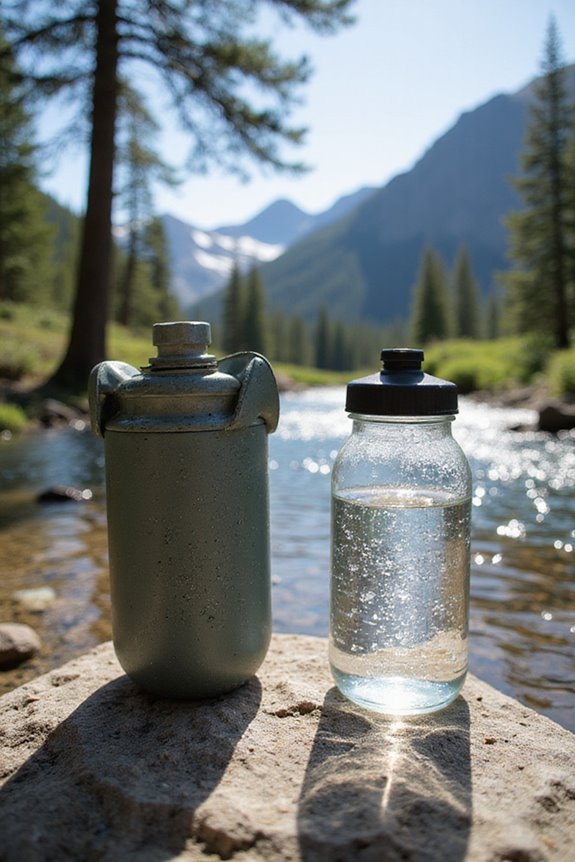Choosing the right water filter is vital for our outdoor escapades! We need to take into account factors like the source of the water—whether it’s a muddy puddle or a pristine mountain stream. Evaluating the filter’s capacity and flow rate is essential, too, especially when we’re parched after a long hike! Don’t forget about certifications; they’re like gold stars for filters! Curious about the different types of filters? Let’s keep exploring this hydration journey together!
Key Takeaways
- Assess the source of your water to determine the appropriate filtration system, whether it’s surface or groundwater.
- Check the filter’s pore size; aim for 0.1 to 0.2 microns to effectively remove bacteria and protozoa.
- Evaluate the filtration capacity and flow rate to ensure the filter meets your hydration needs during outdoor activities.
- Consider the filter’s lifespan and replacement costs to maintain continuous access to safe drinking water.
- Look for certifications like NSF to ensure the filter has undergone rigorous testing for safety and effectiveness.
Understanding Water Contaminants
When we think about our hiking adventures, we often focus on the beauty of nature, the thrill of the trail, and maybe even the snack options we packed (who doesn’t love trail mix, right?). But don’t overlook the water we drink along the way! That water could be tainted by various contaminant sources like heavy metals, organic substances, or even pesky microorganisms. These can have serious health effects, from gastrointestinal issues to long-term neurological problems.
To keep ourselves safe, we’ve got to pay attention to testing methods and explore filtration technologies that meet regulatory standards. Whether it’s using advanced filtration systems or effective remediation techniques, finding clean water is essential for staying refreshed on our adventures! Let’s keep trekking safely! The best water filters have a pore size of 0.1 to 0.2 microns to effectively remove bacteria and protozoa from natural water sources.
Identifying Your Water Source
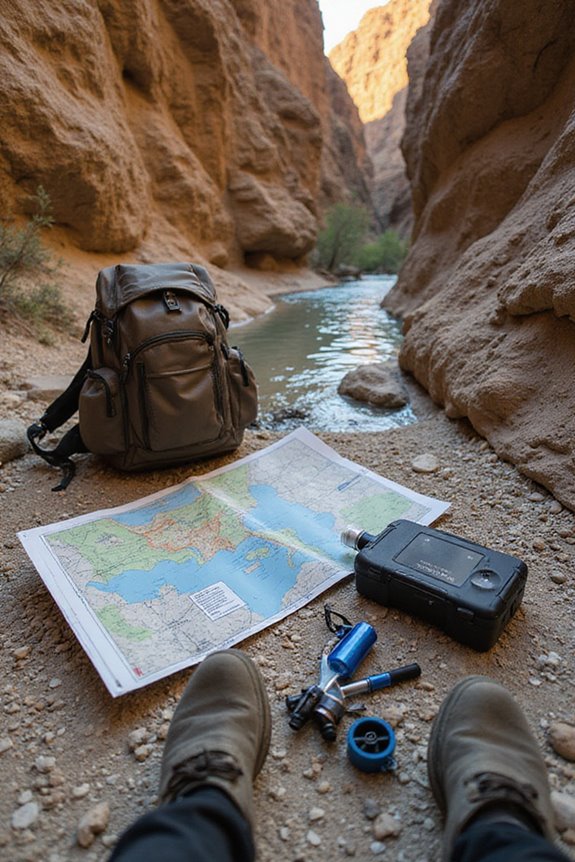
Adventuring into the great outdoors wouldn’t be complete without a solid understanding of where our water is coming from. Are we sipping from flowing surface water, or pulling up fresh groundwater? Knowing our water source is essential for filtering it effectively. Surface water’s often riddled with microbes, not to mention agricultural and industrial pollutants. On the flip side, groundwater analysis shows it’s usually cleaner but can sneak in some pesky metals from the earth. Let’s harness tools like GIS and topographical maps to uncover our water’s secret identity. Whether we’re camping under the stars or just filling our bottles at home, knowing what’s flowing through our taps sets us up for a healthier, freer lifestyle. So, let’s dig in! Quality filters can remove harmful bacteria and viruses from various water sources like streams and lakes, ensuring safe hydration on your hiking adventures.
Assessing Filtration Capacity and Flow Rate
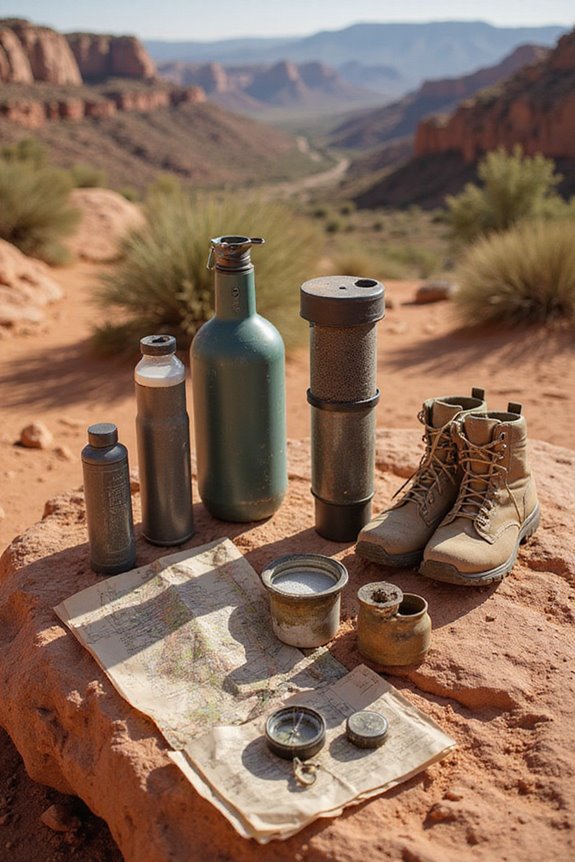
Choosing the right water filter feels a bit like picking the best trails for our next adventure—there’s a lot to ponder! We can’t overlook filter performance, as it truly shapes our water quality. It’s essential to evaluate the filtration capacity and flow rate. Filtering capacity testing helps us identify how much water a filter can handle while keeping contaminants at bay.
We also need to think about our daily water usage; faster flow rates are a must if we’re relying on our filters for hydration during those long hikes! Remember, not all filters are created equal—each has its own strengths and weaknesses. The best filters, like the Sawyer Squeeze models, can remove 99.99999% of bacteria and provide safe drinking water for thousands of gallons with proper maintenance. So, let’s dive deeper into these aspects and choose wisely—it’s essential for our hydration and our adventures!
Evaluating Filter Life and Replacement Costs
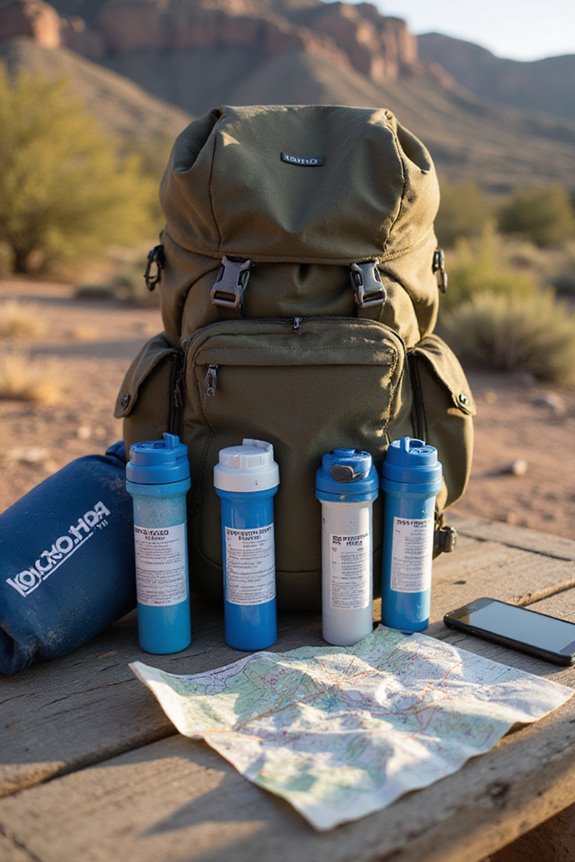
Just because we’re out on the trails enjoying nature doesn’t mean we can ignore the nitty-gritty of our water filters! We must plunge into the details of filter lifespan and replacement scheduling. Depending on our filter type, we might be changing that carbon filter every 6-12 months or a reverse osmosis membrane every 2-3 years—if we’re lucky and the conditions are just right!
Larger households? Brace yourselves; higher water use means more frequent replacements! We can balance cost and convenience by sticking to the manufacturer’s schedule. It’s like knowing when to refill our water bottles on a long hike; staying on top of replacements guarantees we don’t end up with a dry canteen—yikes! Quality backpacking filters typically last through 1,000 to 2,000 liters of water before requiring replacement parts. So, let’s keep our adventure healthy and invigorating!
Importance of Certifications
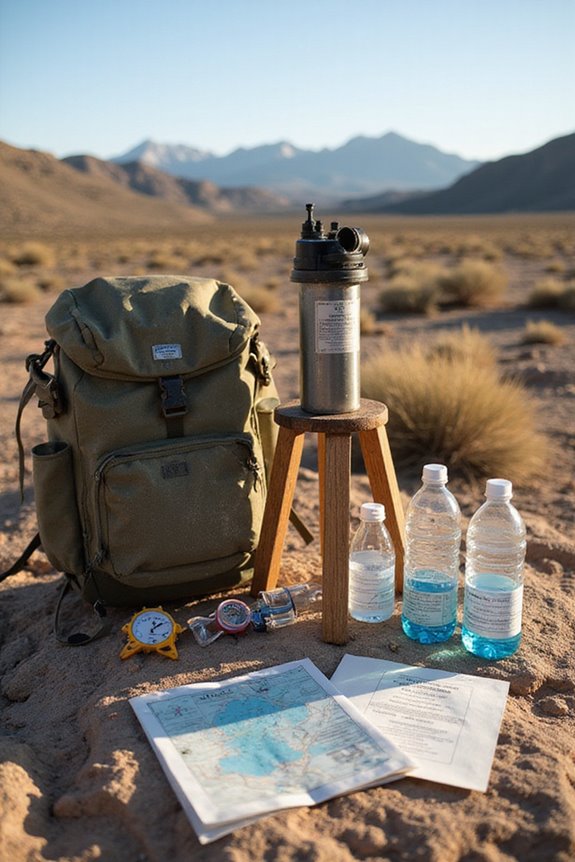
When it comes to filtering our water, certifications are our trusty trail maps—guiding us to safe and reliable products! Think of them as our badges of honor, ensuring that what we drink is free from harmful stuff. With certification benefits like the NSF label, we’re not just buying any filter—we’re choosing ones that actually do what they claim! This boosts consumer confidence and helps us dodge ineffective, deceptive products. Plus, these filters undergo rigorous testing and regular inspections, so we can enjoy our water worry-free. It’s like knowing our compass is accurate on a long hike; we’d want nothing less when it comes to our health. Products like the LifeStraw Peak Series effectively remove 99.999% of microplastics and other contaminants through certified filtration processes. So let’s embrace these certifications and sip safely!
Features of Whole House Water Filters
As we plunge into the world of whole house water filters, it’s clear that they’re more than just appliances—they’re our water guardians! These systems offer stellar filtration capacities and impressive flow rates, ensuring we enjoy clean water without sacrificing pressure. Imagine sipping fresh, purified water straight from the tap, never worrying about contaminants!
Beyond the basics, many systems boast additional features like water pressure gauges and antimicrobial media, all designed to enhance durability and performance. With the right installation, these filters easily manage our home’s water demands while reducing maintenance. We’ll experience less hassle thanks to high-capacity filters, needing fewer changes. So, let’s make a splash into cleaner living and embrace the freedom that comes with knowing our water is safe!
Comparing Different Types of Water Filters
What’s the best way to sift through the sea of water filter options available? Let’s explore the world of water filters, where each type serves a unique purpose. Activated carbon filters excel at improving taste and smell but have limited filter efficiency against heavy metals. Reverse osmosis systems? They’re the heavy hitters, tackling contaminants with gusto, although they can be a little water-wasteful. Then we’ve got ion exchange filters—great for softening hard water, but don’t expect them to battle germs. UV purifiers are the ultimate disinfectors when paired with sediment filters. But remember, different filters come with different maintenance frequencies. So, let’s find the right combo to quench our thirst for purer water!
Installation and Maintenance Considerations
Maneuvering the world of water filter installation and maintenance can feel a bit like tackling a steep hike without a map—overwhelming and perhaps a little intimidating. But don’t worry! We’ve got some great installation tips ready for you. Start by prepping the area, clearing clutter, and gathering your tools. Trust us, having everything in place makes those plumbing connections way smoother!
Once we’ve got the filter set up, let’s tackle that maintenance schedule. Regularly checking filter replacement intervals keeps our water fresh and pure. Keep the area under the sink clear for easy access. And hey, documenting installation dates? Consider it your adventure log for clean water! With these steps, we’ll conquer installation and maintenance like seasoned hikers on a familiar trail!
Frequently Asked Questions
How Do I Know if My Water Needs Filtering?
To know if our water needs filtering, we should consider water quality indicators and conduct regular testing methods. Unusual tastes, odors, or discoloration often signal contamination that affects our health and comfort. Let’s stay informed!
Can I Use Multiple Filter Types Together?
Like blending different colors on a canvas, we can explore multiple filter types together. Their combined filtration creates harmonies of purity, but filter compatibility is key for achieving the freedom of safe, invigorating water.
Are There Portable Water Filters Available?
Yes, there are plenty of portable options available for us. Travel filters come in various designs like straws, pumps, and bottles, ensuring we stay hydrated and free to explore without worrying about water safety.
How Do Water Filters Affect Water Taste?
Did you know over 60% of people notice taste improvements after using filters? By choosing the right filter types, we can enhance our water’s flavor, ensuring a fresher, cleaner experience that aligns with our desire for quality.
What Is the Environmental Impact of Water Filters?
When we consider the environmental impact of water filters, we’re faced with sustainability concerns. We must also address filter disposal, ensuring proper recycling practices to minimize pollution and foster a healthier planet for future generations.

